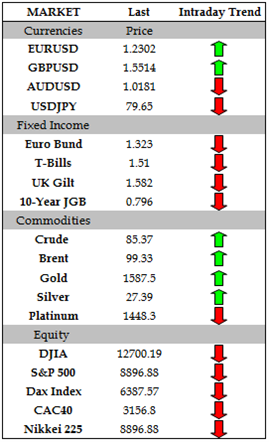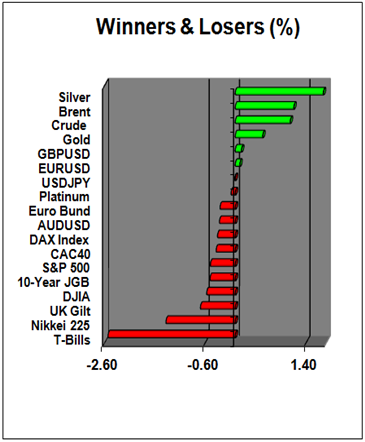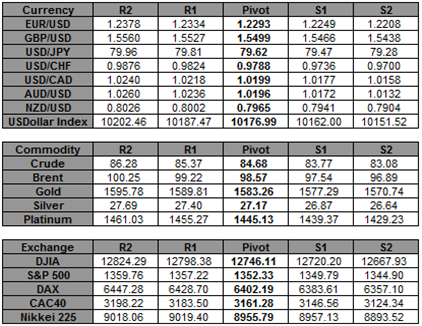Commodity Currencies Weaken as Chinese Data Stokes Concerns
Fundamental Headlines
- Euro Touches 2-year Low Before Finance Ministers Meet – Bloomberg
- Dealers Declining Bernanke Twist Invitation – Bloomberg
- Obama to Seek One-Year Extension for Some of Bush Tax Cuts – Reuters
- EU Ministers Set to Relax Spain Deficit Targets – WSJ
- Rate Probe Moves to Political Arena – WSJ
Asian/European Session Summary
The flight to safety found some follow-through in the overnight, with Asian equity markets selling off and the Japanese Yen and the US Dollar finding additional capital inflows to start the second week of July. The big news, of course, is the data out of China. Both the June Consumer Price Index and Producer Price Index showed signs of further deterioration, suggesting of course that there could be a slower pace of investment into China (or deflation, but that seems to be a stretch at this point).
The inflation figures are important to consider in context of the big picture. This is the first sub-3.0% print on the year-over-year CPI reading (at 2.2%) since June 2010. Furthermore, the People’s Bank of China just cut its key interest rate by another 0.31% to 6.00%, the second such rate cut the past four weeks. Even more concerning is that these are the first moves to make monetary policy more accommodative since 2008, right before global financial markets fell into a tailspin. Accordingly, as history has shown, it takes approximately six-months for rate cuts to be filtered through an economy; thus data out of China might not pick back up for a bit here, keeping pressure on global growth prospects through the summer months.
Moving onto Europe, few developments emerged today with the exception being a speech from European Central Bank President Mario Draghi. The comments were bland and essentially a repetition of what he said at the European Central Bank press conference following the policy meeting on Thursday. The gist holds: political leaders need to do more; the European Central Bank sees inflation falling and could ease further; the Euro is “here to stay.”
But what’s concerning about the reaction we’ve seen among market participants to the policy efforts set forth around the globe last week is essentially that, without more easing or a major liquidity injection, everything else done by Europe’s leaders is essentially meaningless beyond a few hours or days.
Taking a look at credit, pressure remains on the European periphery, with the focus lying largely on Italy, Spain, and Portugal as well. On the longer-end of the yield curve, the Italian, Portuguese, and Spanish 2-year notes’ yields drove higher to 6.074%, 6.983%, and 9.802% (off of their session highs in terms of yield). On the shorter-end of the yield curve, the Italian, Portuguese, and Spanish 10-year notes’ yields rose more dramatically, to 4.020%, 6.595%, and 4.889%, respectively.
AUDUSD 5-minute: July 9, 2012

Charts Created using Marketscope – Prepared by Christopher Vecchio
The Australian Dollar is the worst performing currency, with the AUDUSD depreciating by 0.36 percent. The British Pound is the top performer today, gaining 0.10 percent against the US Dollar. The EURUSD has consolidated, gaining some 0.07 percent but a bounce is likely with technicals hitting extreme oversold conditions on short-term charts. The USDJPY is slightly lower, down 0.01 percent.
24-Hour PriceAction


Key Levels: 15:55 GMT

Thus far, on Monday, the Dow Jones FXCM Dollar Index (Ticker: USDOLLAR) is trading higher, at 10176.61 at the time this report was written, after opening at 10173.098. The index has traded mostly higher with the high at 10191.98 and the low at 10166.51.
--- Written by Christopher Vecchio, Currency Analyst
To contact Christopher Vecchio, e-mail cvecchio@dailyfx.com
Follow him on Twitter at @CVecchioFX
To be added to Christopher’s e-mail distribution list, send an e-mail with subject line "Distribution List" to cvecchio@dailyfx.com

 Yahoo Finance
Yahoo Finance 
